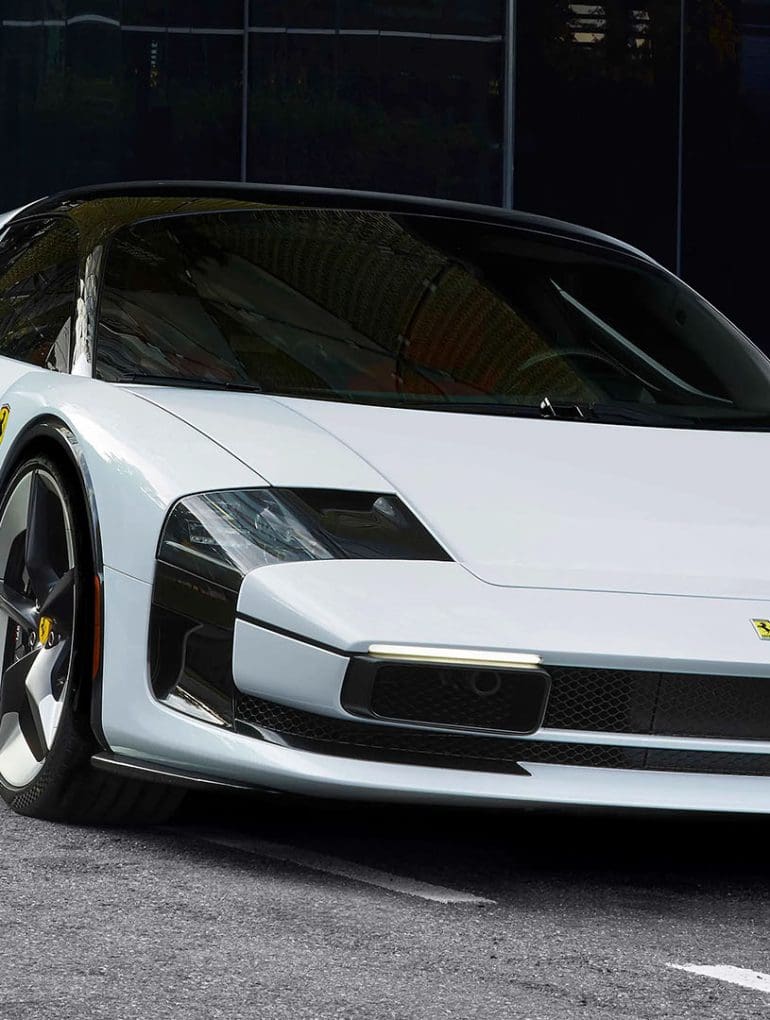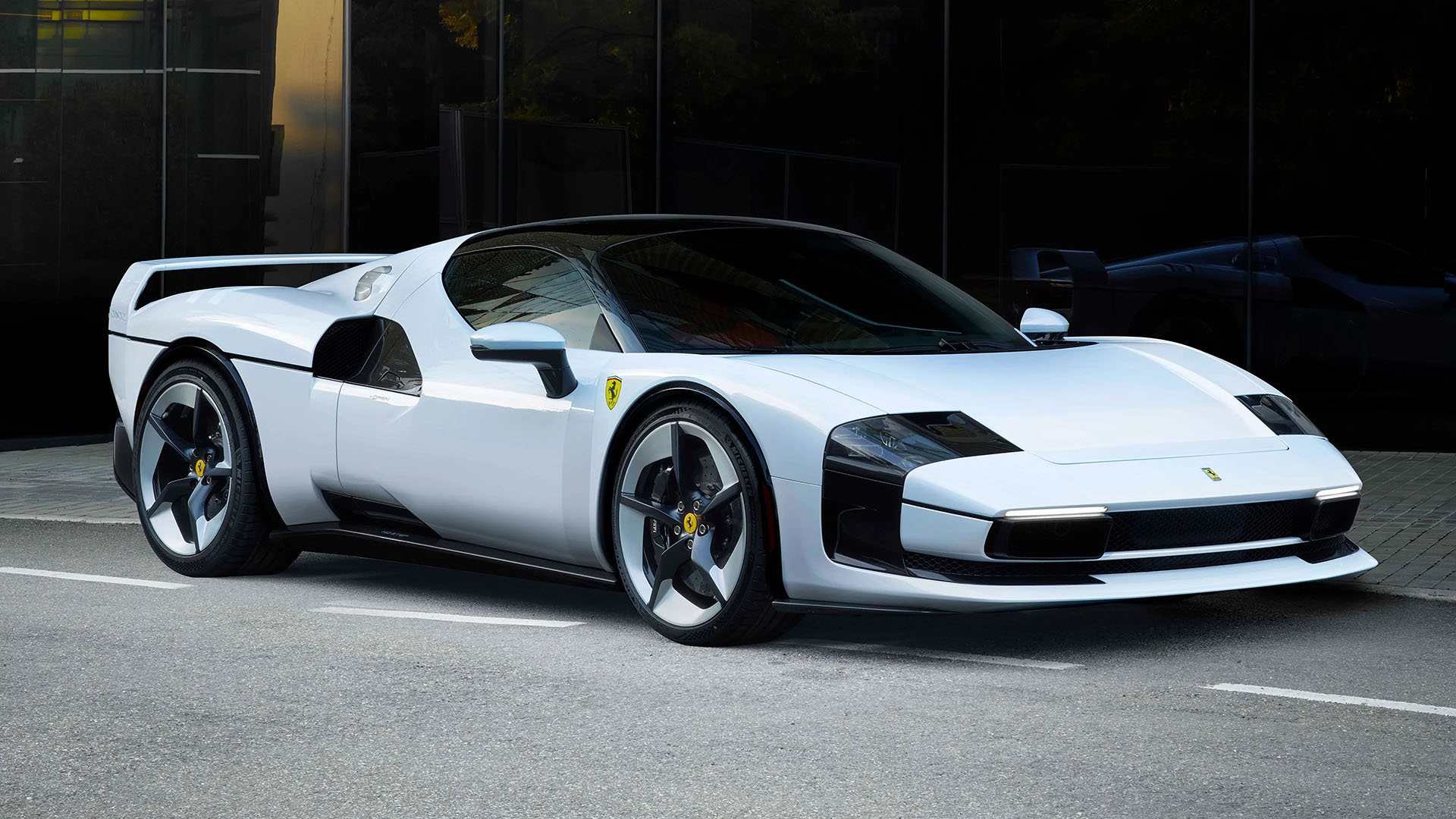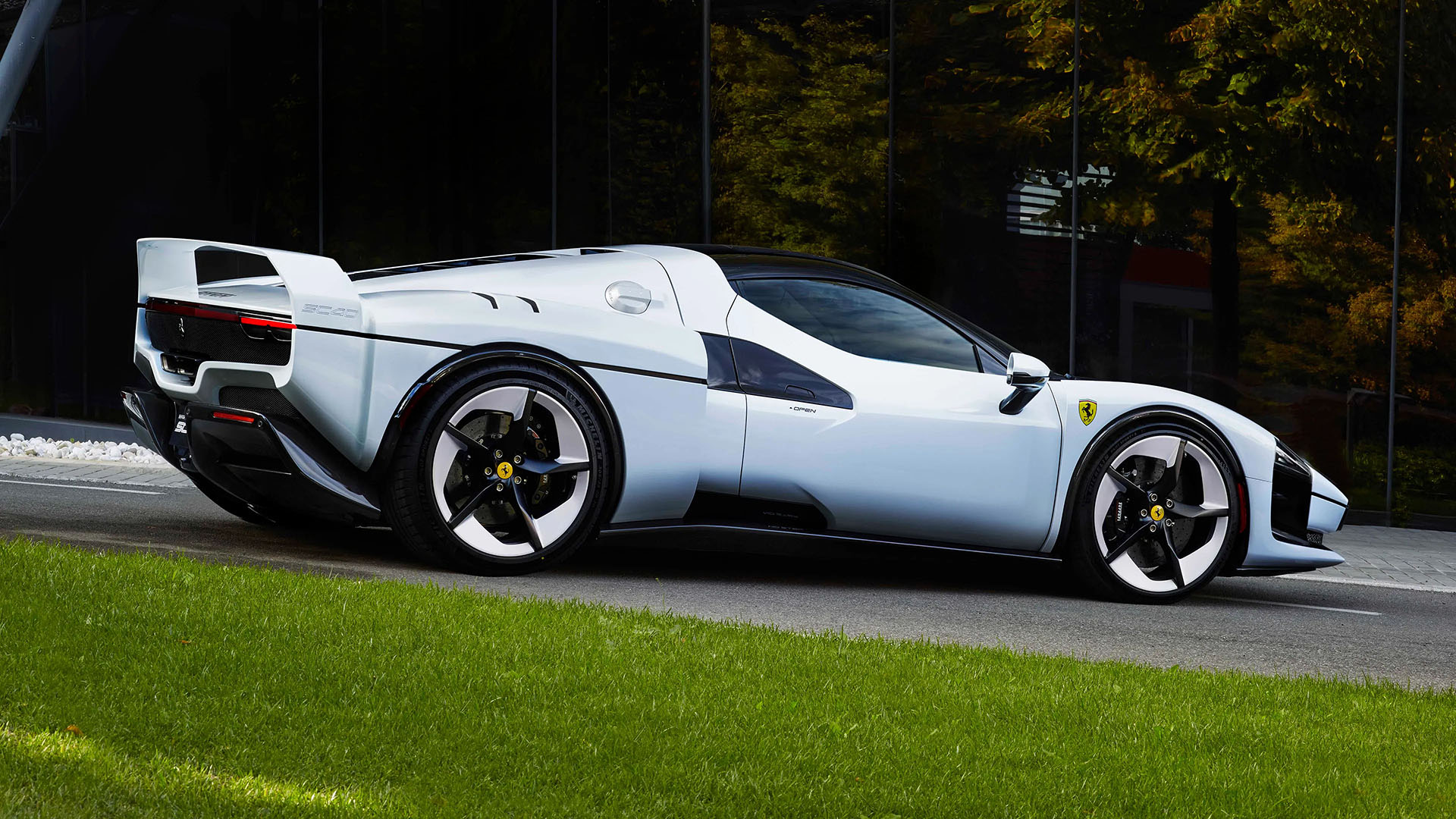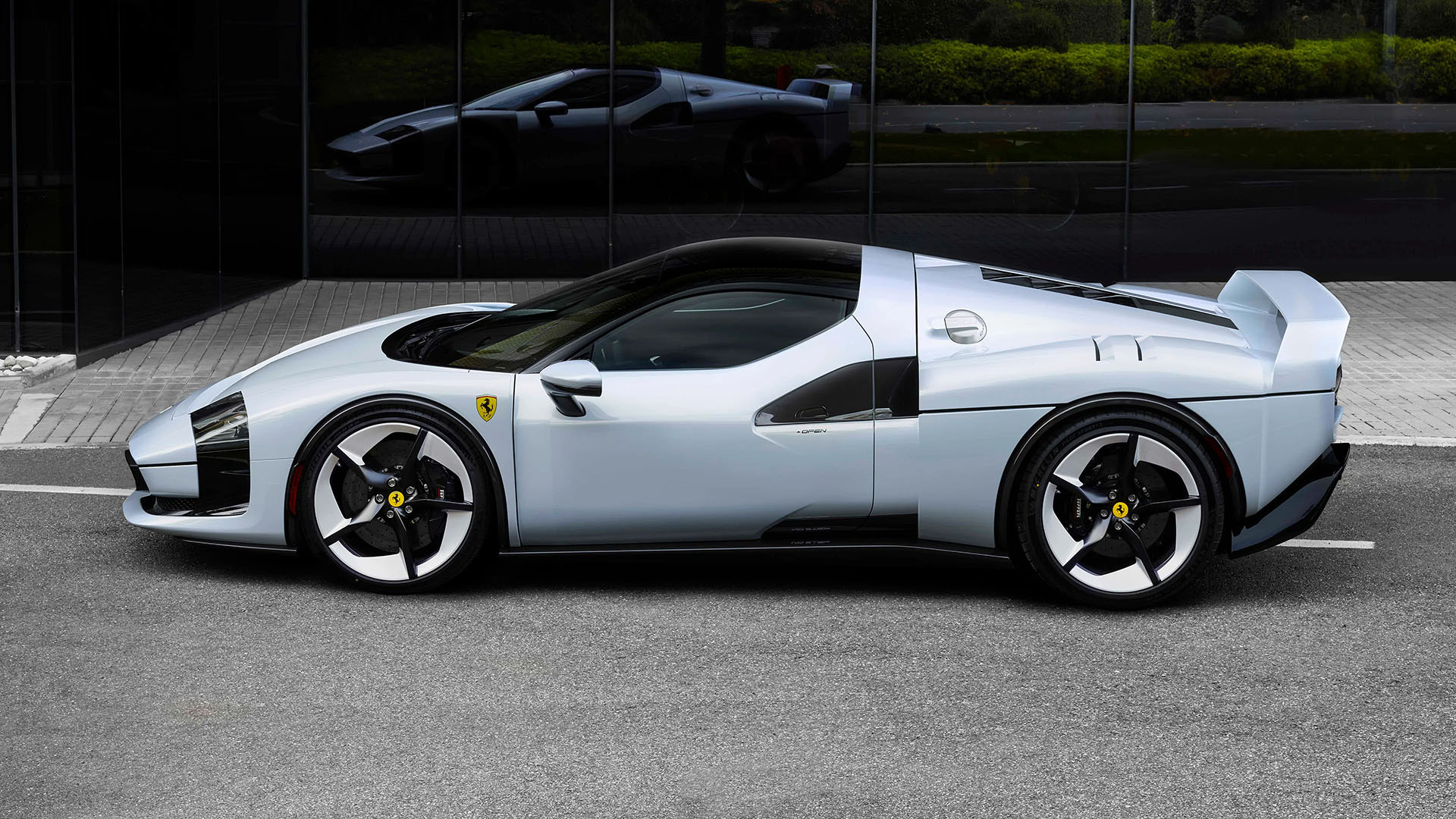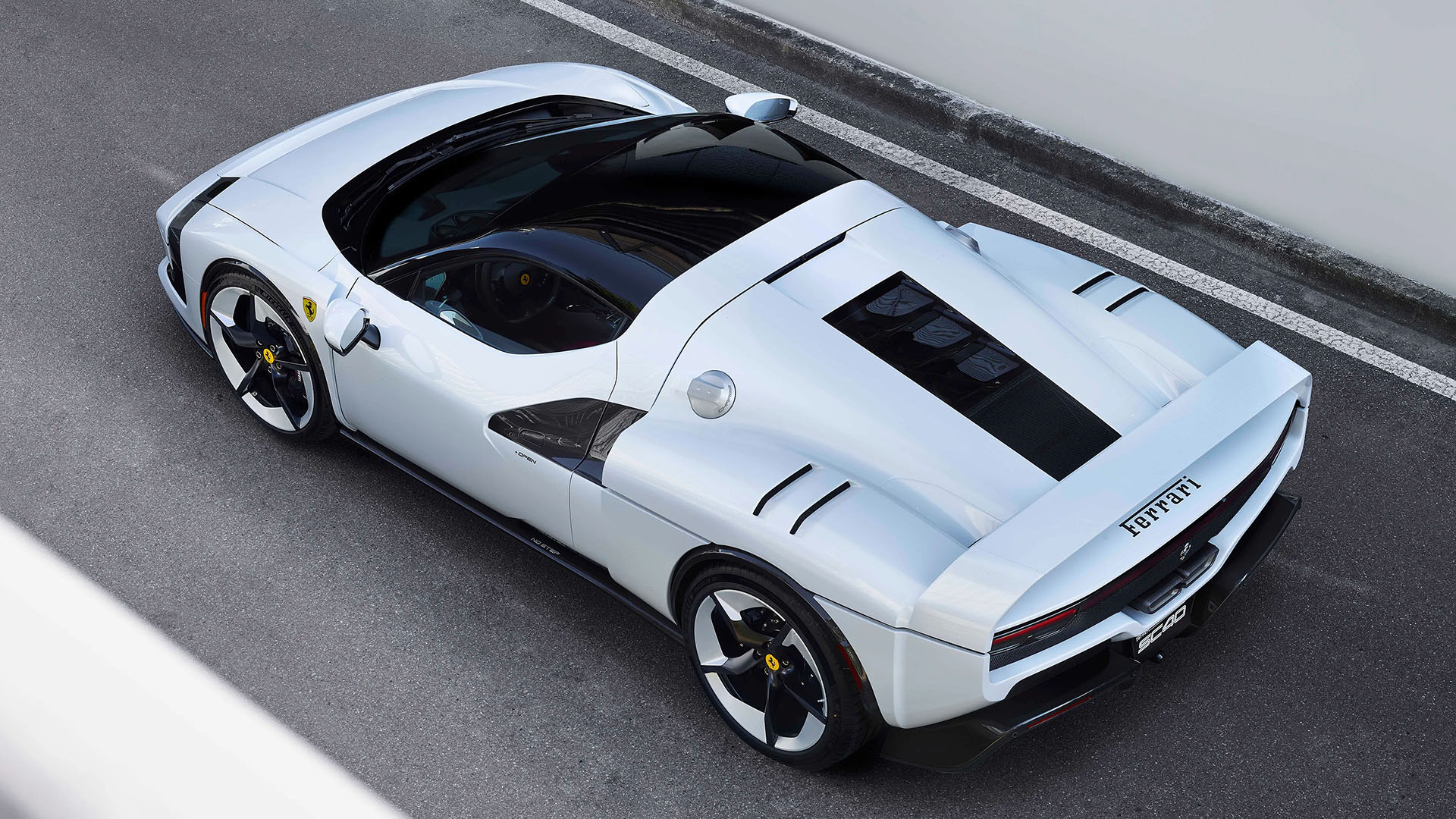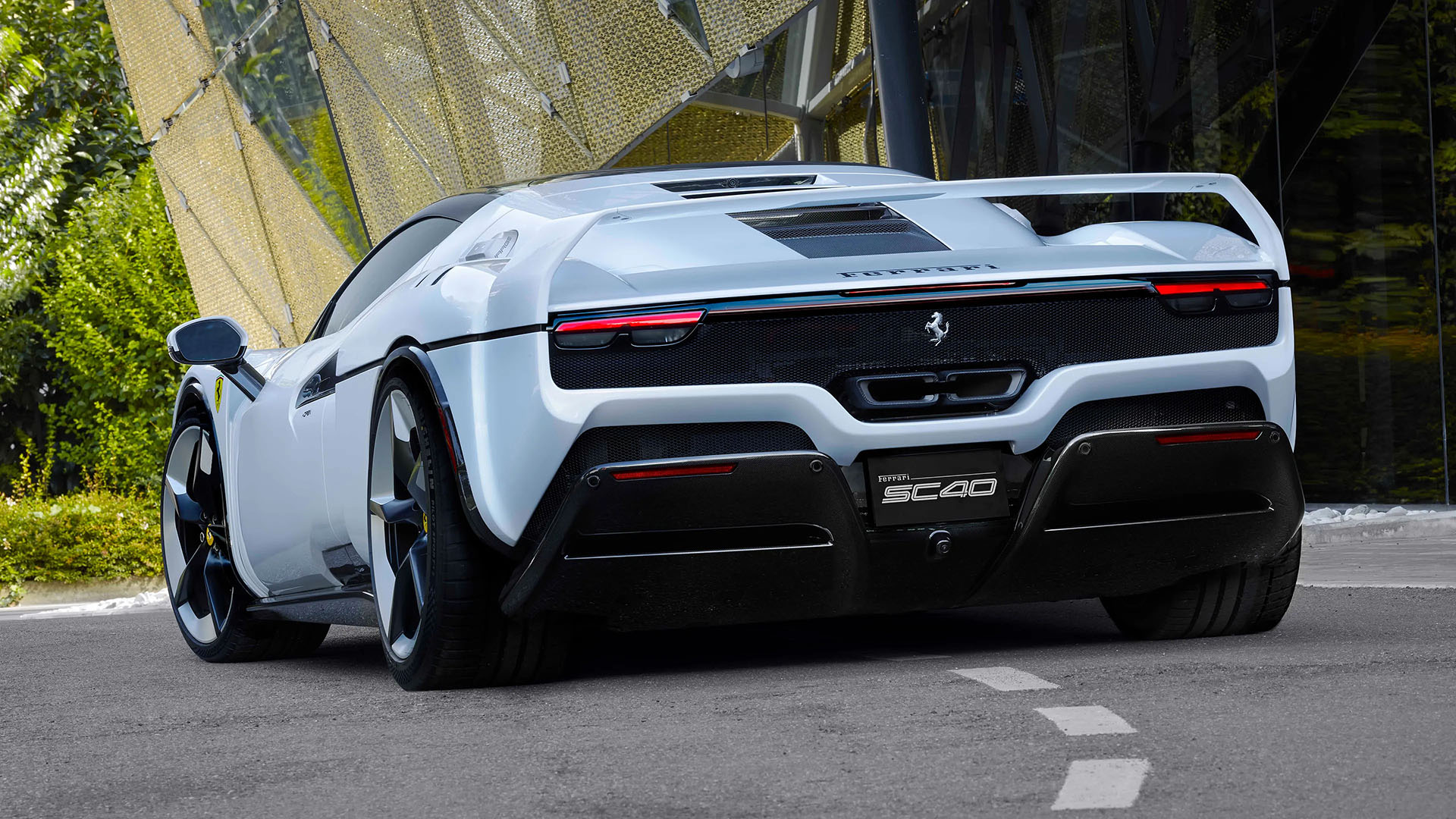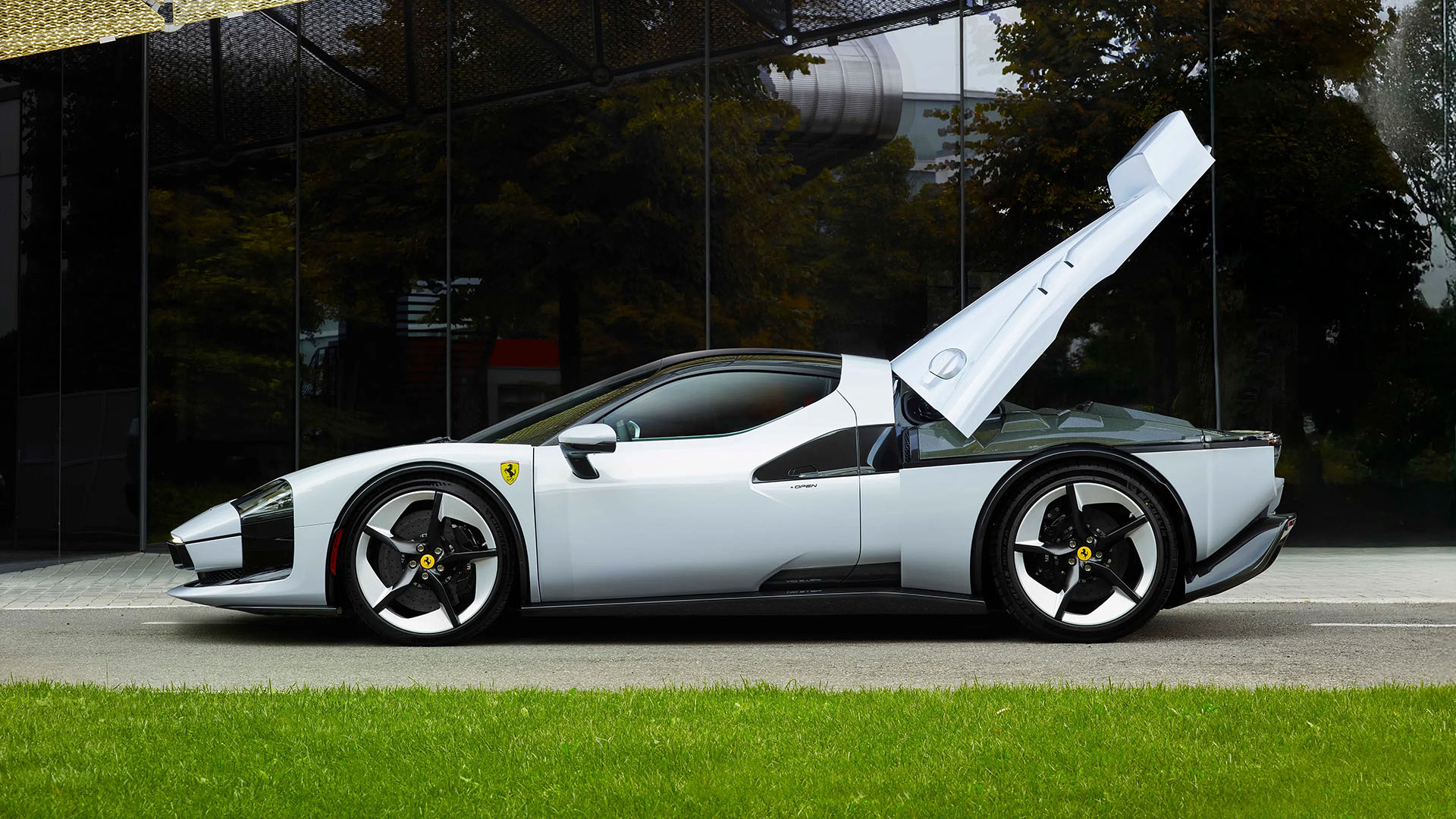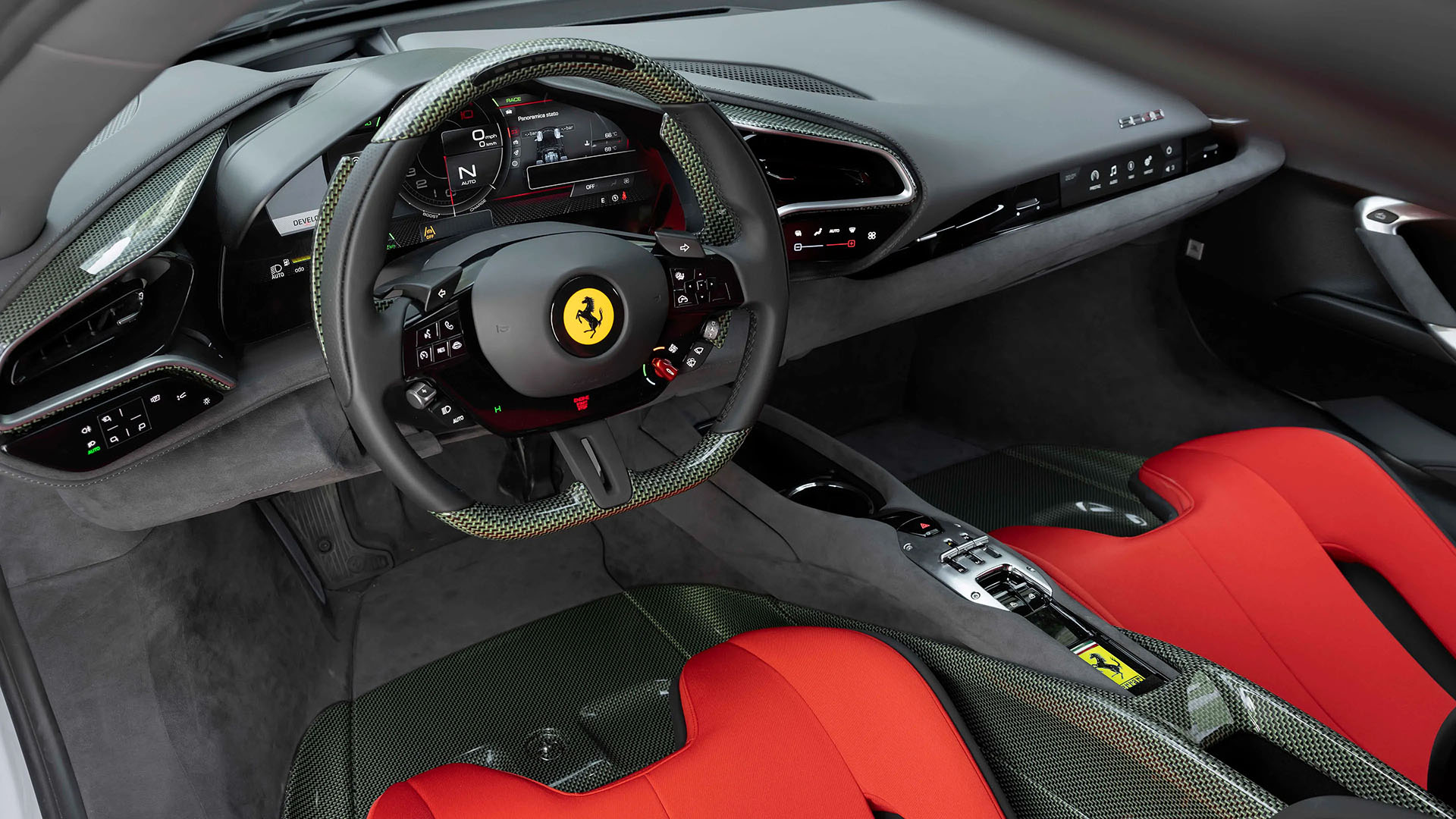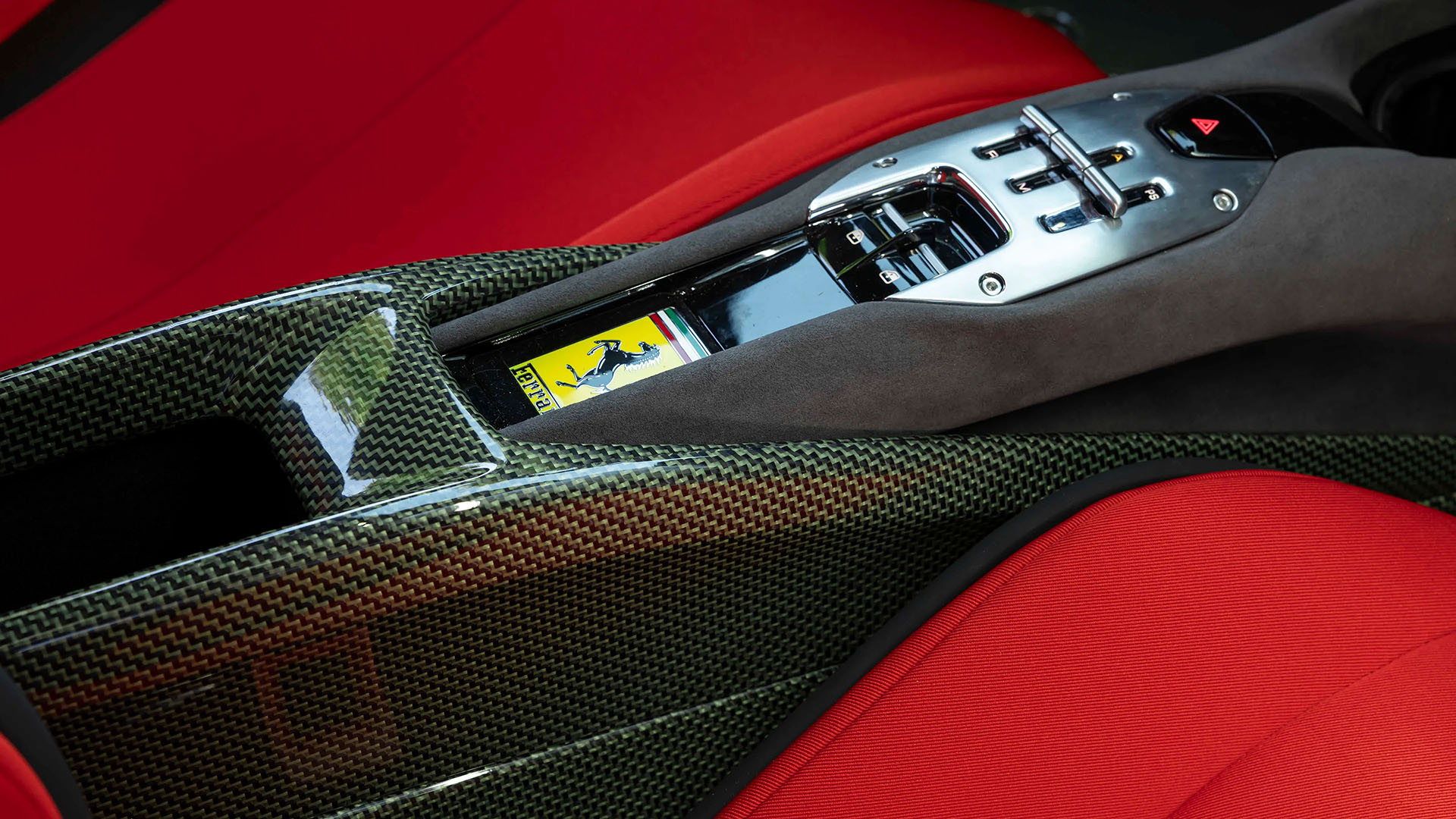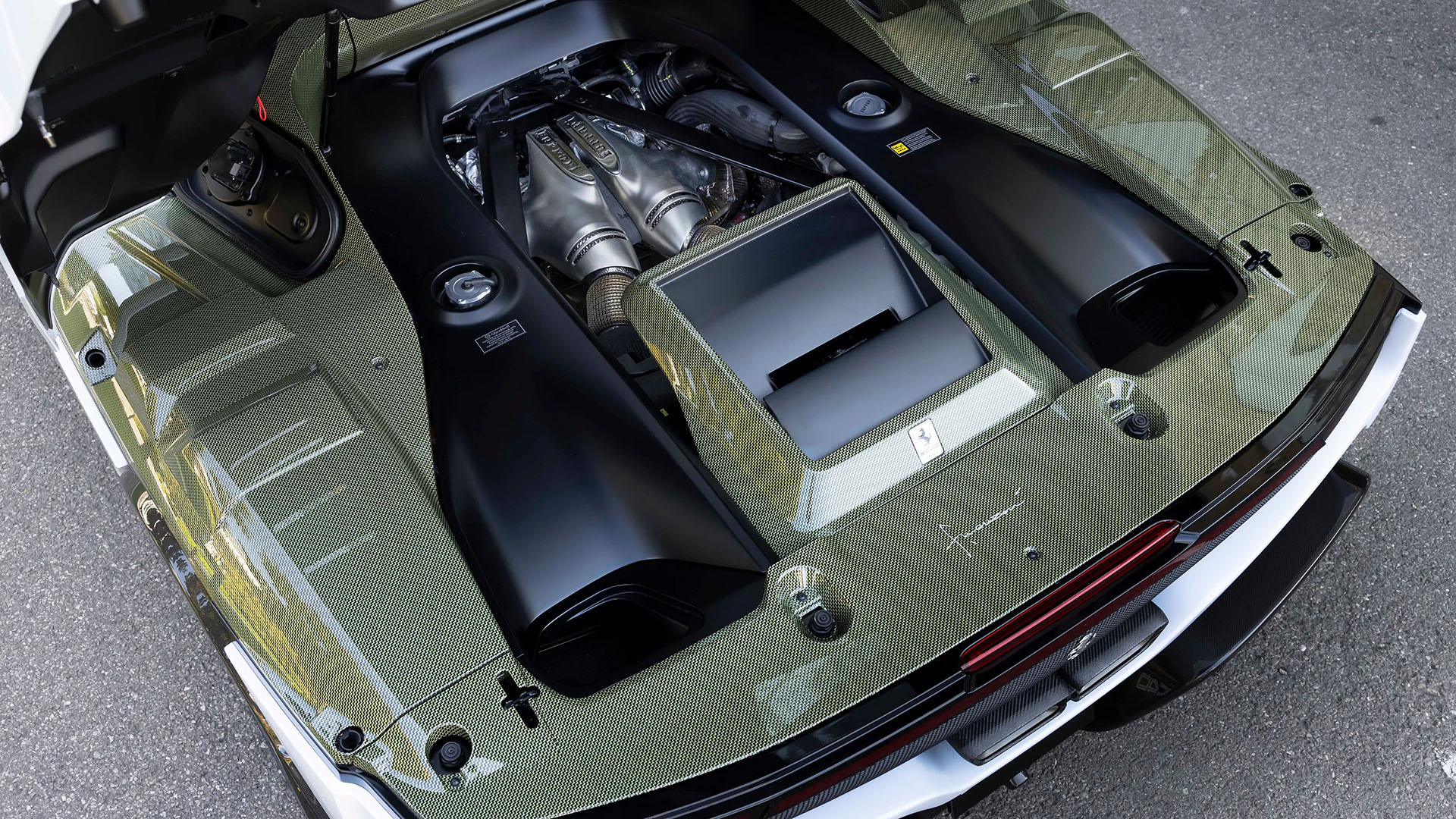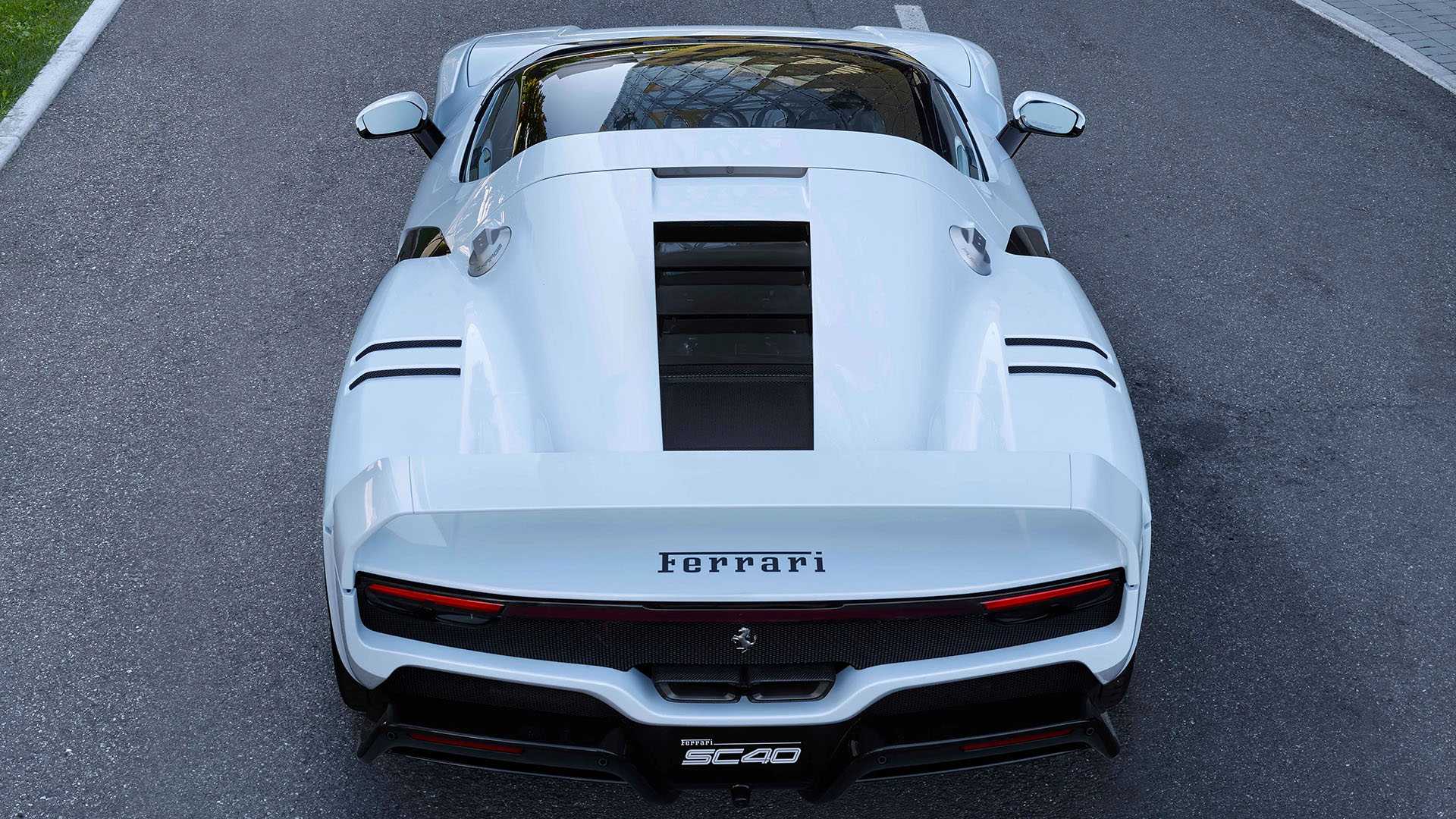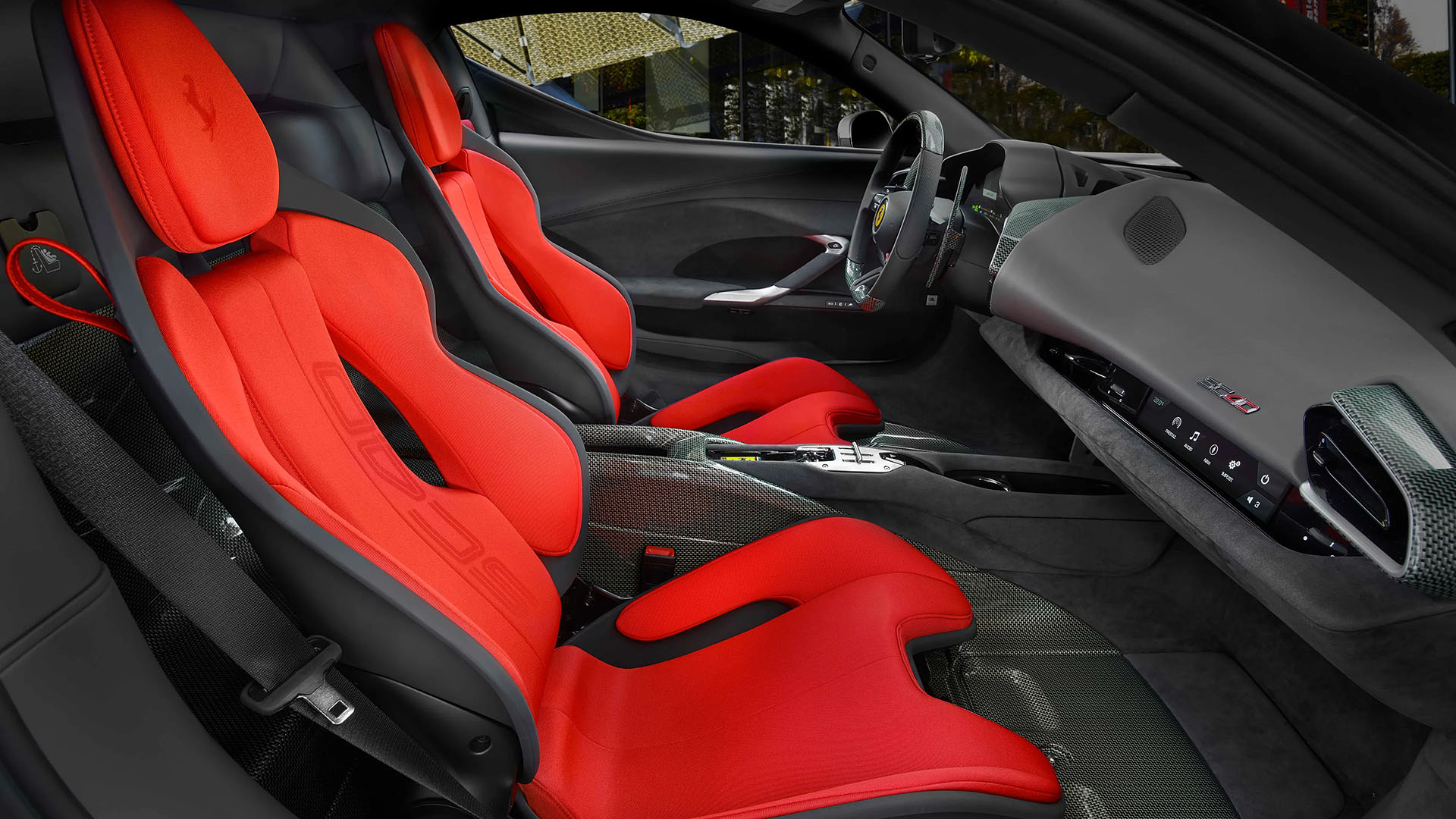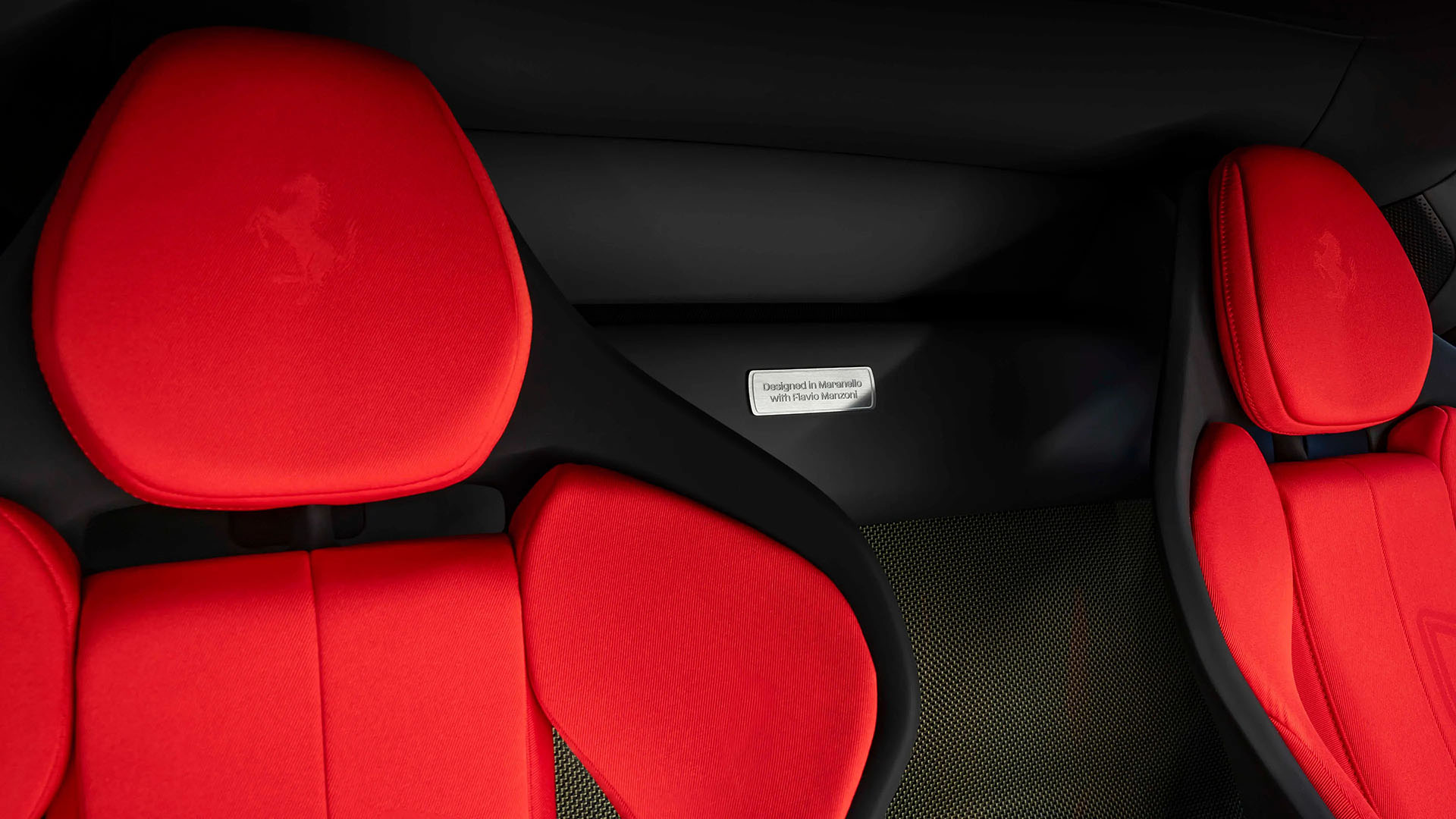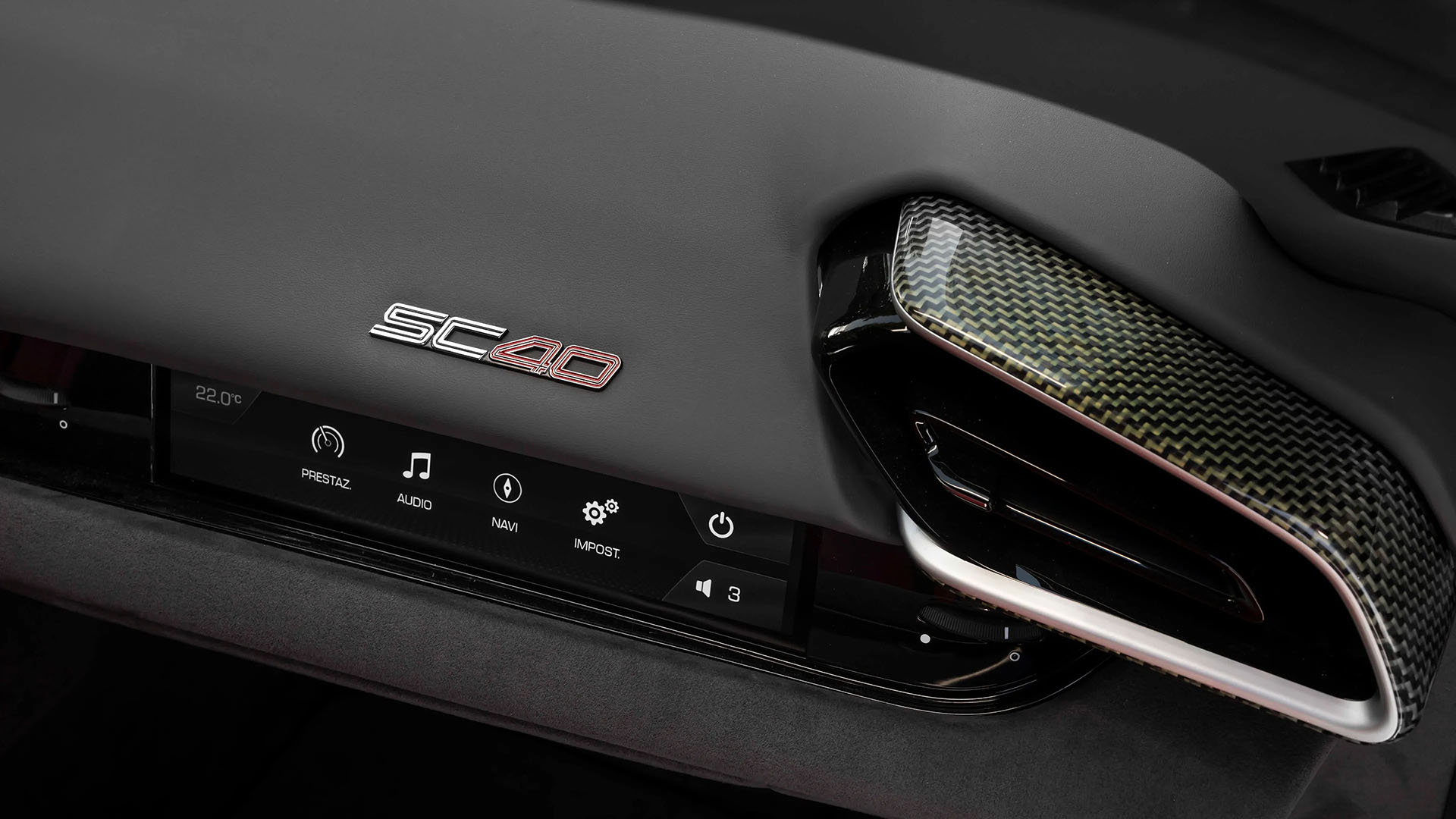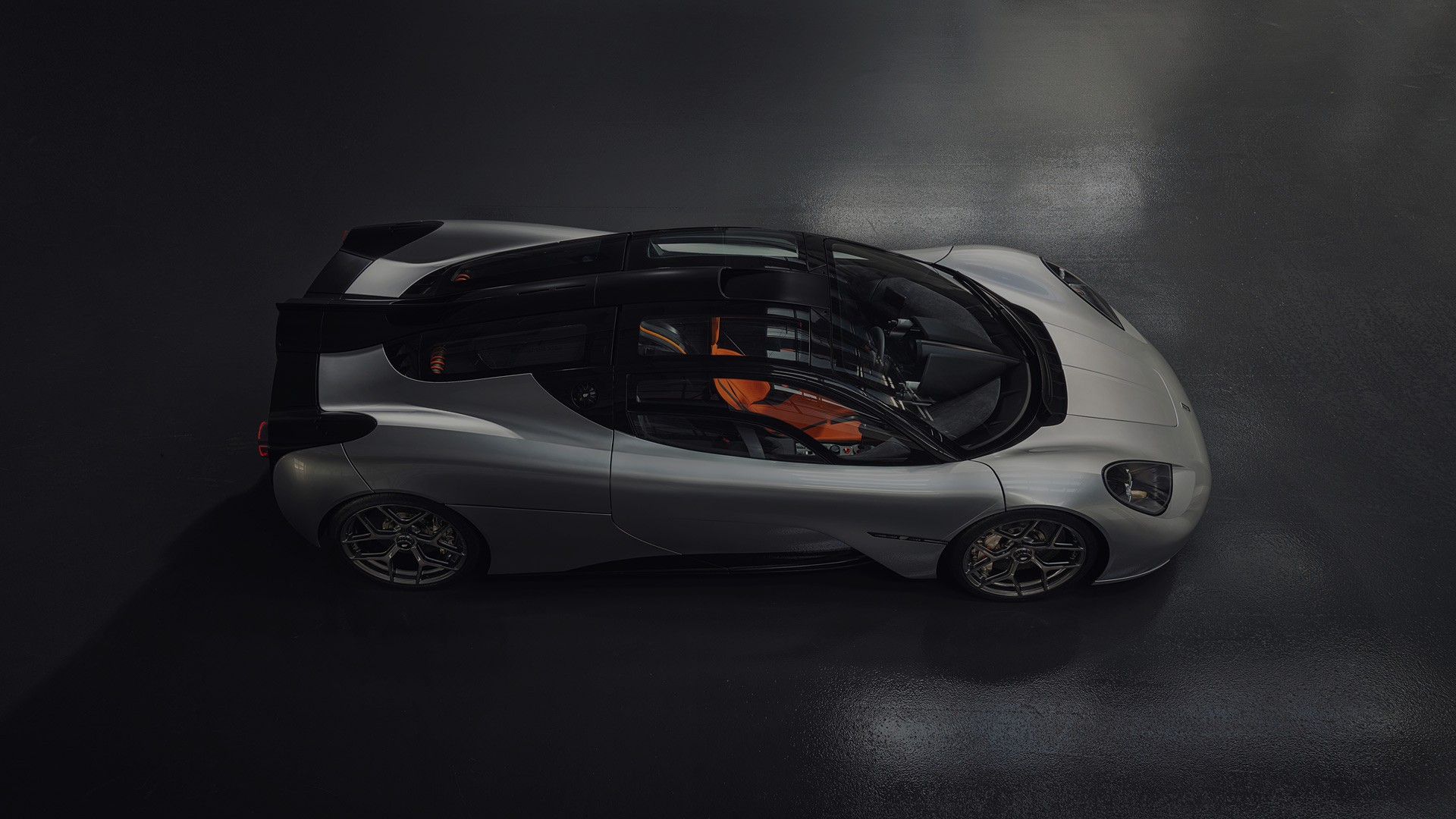Ferrari has unveiled its latest creation from the Special Projects program — the Ferrari SC40, a bespoke one-off designed for a single, fortunate client. Crafted under the direction of Flavio Manzoni at Ferrari’s Styling Centre, the SC40 channels the spirit of the legendary F40 while bringing it firmly into the modern era of Maranello design and technology.
At its core, the SC40 shares its architecture, chassis, and powertrain with the 296 GTB, meaning a mid-rear-mounted twin-turbo V6 hybrid lies beneath its sculpted skin. But while it borrows the bones of Ferrari’s latest hybrid supercar, the SC40 is visually and emotionally in a world of its own.
The car’s sharp, angular silhouette pays homage to the 1987 F40, but it’s no retro pastiche. Instead, the SC40 translates that raw, purposeful geometry into a contemporary design language defined by precise industrial forms and muscular, squared volumes.
The SC40’s proportions are classic Ferrari: a long, low nose, a short rear overhang, and a high, fixed rear wing that flows seamlessly from the flanks. Painted in a bespoke SC40 White, the wing merges into the engine cover through a black accent line that enhances the visual drama of the rear end. Beneath, an open mesh exposes glimpses of the mechanical heart — a visual reminder that this car, despite its elegance, is every bit a machine.
Distinctive smoked Lexan® louvers crown the engine bay, echoing the F40’s iconic rear glass and connecting to lower intakes and side vents. A central titanium exhaust, crafted using additive manufacturing, adds an ultramodern flourish, while the taillights subtly reference the 296 GTB that underpins the car.
The side profile of the SC40 is dominated by bold intercooler air intakes, reinterpreting the classic NACA ducts through crisp carbon-fiber geometry. Ferrari’s designers describe the car’s vertical elements — from the wing edges to the door cuts — as a kind of “visual rhythm,” like a musical composition structured around tension and release.
Up front, the headlights sit at the outermost corners, set within black housings that visually widen the car. The full-width lower intake and rectangular brake ducts lend the SC40 a determined, almost architectural stance — assertive yet unmistakably Ferrari.
Step inside, and the F40 inspiration is even clearer. The cabin features extensive use of carbon-Kevlar, a modern reinterpretation of the F40’s race-bred minimalism. It’s found in the footwells, dashboard inserts, and even the steering wheel, contrasted by Charcoal Alcantara® and red Jacquard fabric upholstery. The seats wear embroidered Prancing Horses and a woven SC40 logo, cementing the car’s bespoke nature.
Every inch of the SC40 is deeply considered. The Ferrari lettering on the rear cover is rendered in negative, revealing the carbon beneath. The fuel and charging caps are milled from brushed aluminum, and the exclusive wheels combine brushed metal with black spokes — a modern nod to Ferrari’s heritage of craftsmanship.
The unique SC40 White paint — a cool tone developed specifically for this car — evokes the look of carbon-Kevlar in sunlight, creating a subtle connection between exterior and interior.
A styling buck of the SC40 will be displayed at the Ferrari Museum in Maranello starting October 18, giving enthusiasts a rare glimpse at one of the most exclusive projects ever produced by the Prancing Horse.
Through its Special Projects division, Ferrari continues to push the boundaries of personalization, crafting one-off masterpieces that merge automotive engineering, sculpture, and emotion. The SC40 stands not as a tribute to the past — but as a testament to how Ferrari redefines it.


